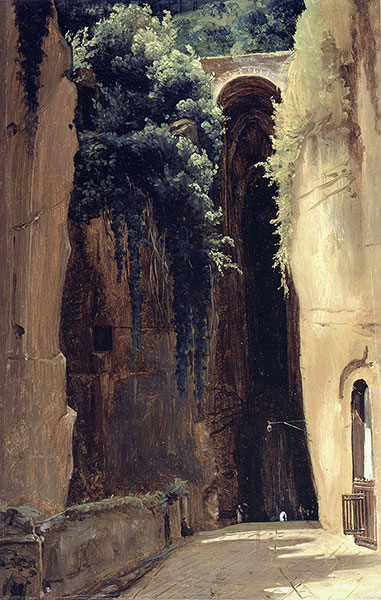
In 1757, the British statesman and philosopher Edmund Burke published A Philosophical Enquiry into the Origin of Our Ideas of the Sublime and Beautiful, an aesthetic treatise that profoundly influenced artists across Europe well into the nineteenth century. Burke understood the Sublime as deriving from “whatever is fitted in any sort to excite the ideas of pain, and danger, that is to say, whatever is in any sort terrible...or operates in a manner analogous to terror.” He emphasized the powerful, even pleasurable, emotional response that could arise from the contemplation of such possibilities, particularly when considered from a place of safety.
Many artists turned to the natural world as their principal source of the Sublime, emphasizing its magnitude and power. While the Sublime is mostly associated with large-scale oil paintings intended to engulf and overwhelm viewers, artists frequently worked on a smaller scale to develop and experiment with their representations. They endeavored to render nature and its effects faithfully by sketching en plein air, particularly on their travels through dramatic landscapes. The oil sketches displayed here engage with a range of Sublime effects, from the impressive vastness of a mountain range and the thrill of rushing water to the terror of a raging storm.
Sublime on the Small Scale highlights works from the collection of oil sketches given jointly to the Morgan and the Metropolitan Museum of Art by Trustee Eugene V. Thaw.
Gustaf Söderberg, 1799–1875
The Grotto of Posillipo, Naples, 1820
Oil on paper, irregularly cut, mounted to Masonite
Thaw Collection, Jointly Owned by the Metropolitan Museum of Art and the Morgan Library & Museum, Gift of Eugene V. Thaw, 2009
2009.400:106
